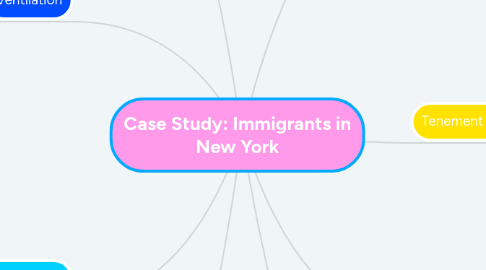Case Study: Immigrants in New York
저자: hollie mcintosh


1. Slums/Ghettoes
1.1. After 1890, immigrants were forced to live in slums or ghettos.
1.2. Defenitions of slums and ghettoes:
1.2.1. Slum - part of the city where most people that live there have low-incomes. Most often have social problems too.
1.2.2. Ghetto - the poor area of the city where only people of a certain/specific ethnic group live.
1.3. Most immigrants first settled into these places.
1.4. Areas of New York where new immigrants settled were known as;
1.4.1. Little Russia
1.4.2. Little Italy
1.4.3. Little Poland
1.5. There was large numbers of new immigrants moving to New York, to handle this, tenement houses were developed.
2. Tenement Overcrowding
2.1. There was usually only one or two rooms per family.
2.2. Most new immigrants had large families.
2.3. Overcrowding caused many problems.
2.4. Some families lived with their children, parents and grandparents all in a 1 or 2 bedroom house.
3. Sanitation
3.1. Less than half of all tenements had running water.
3.2. Not many tenements had bathrooms.
3.3. Some tenements shared a single toilet in the shared hallway with multiple families.
3.4. Some tenements only had a backyard outhouse.
3.5. Most apartments had no heating.
3.6. Some toilets were at least 8 floors down from peoples apartments.
3.7. Some toilets were in basements.
4. Ventilation
4.1. There was over 1000 rooms in one tenement block!
4.2. Over 400 rooms had no windows.
4.3. There was no fresh air passed through the tenement block.
4.4. There was no heating in any of the apartments.
4.5. Many people died from illnesses caused by lack of heating and damp from the apartments.
4.6. When nights were super hot, some people slept on roofs or on fire escapes or on top of their buildings.
4.7. There was no elevator in any of the tenement blocks.
5. Employment
5.1. After 1880, jobs were in short supply.
5.2. Working conditions were terrible.
5.3. At work, there was lots of problems that included;
5.3.1. Lots of people (overcrowding).
5.3.2. Most workplaces were very dirty.
5.3.3. There was people from all ages working in workplaces.
5.4. People were made to do any jobs that would make money such as; sewing, stitching, making clothes and repairing watches and clocks.
6. Crime
6.1. Many immigrants tried to escape the bad conditions by earning money, immigrants would do lots of things to earn money such as;
6.1.1. Prostitution.
6.1.2. Theft.
6.1.3. Becoming gangsters.
6.1.4. Gambling
6.2. Every block had its gambling dens, its prostitutes and its gangsters, it was normal at that time.
7. Children
7.1. Kids played on the streets and on sidewalks.
7.2. Schools were overcrowded and many people couldn't go to them because they were turned away.
7.3. School buildings were badly heated, old and many were decaying.
7.4. The special needs of children (if they spoke foreign languages/had learning disabilities) were not helped by schools.
7.5. More than 100,000 children worked in factories instead of going to school.
7.6. Factories were dangerous as they were dark, dirty and had lots of damp which could cause illnesses.
8. Disease
8.1. Diseases spread very quickly in tenement blocks because of lack of ventilation and the tight and overcrowded circumstances.
8.2. Common diseases were;
8.2.1. Cholera.
8.2.2. Tuberculosis.
8.2.3. Typhoid.
8.2.4. Smallpox
